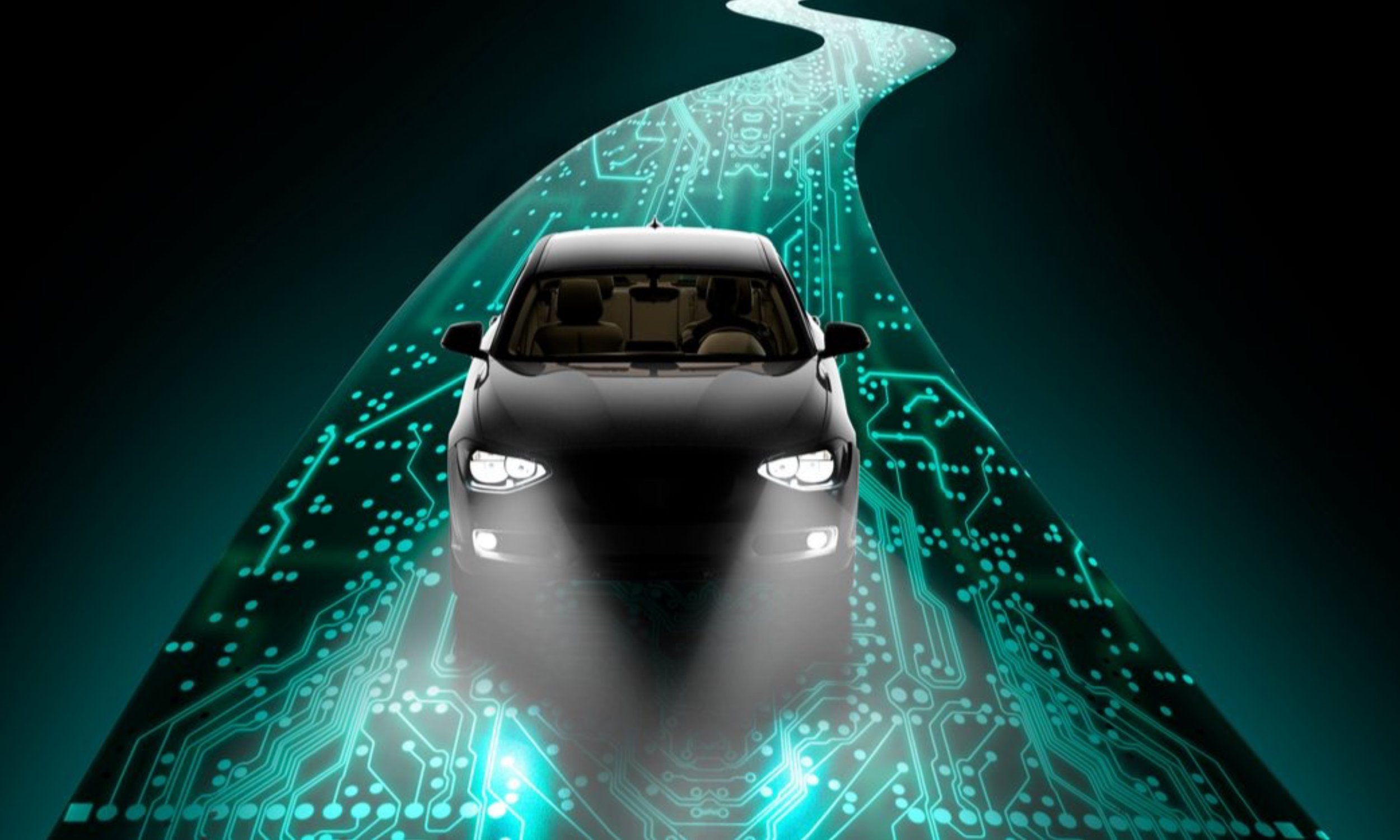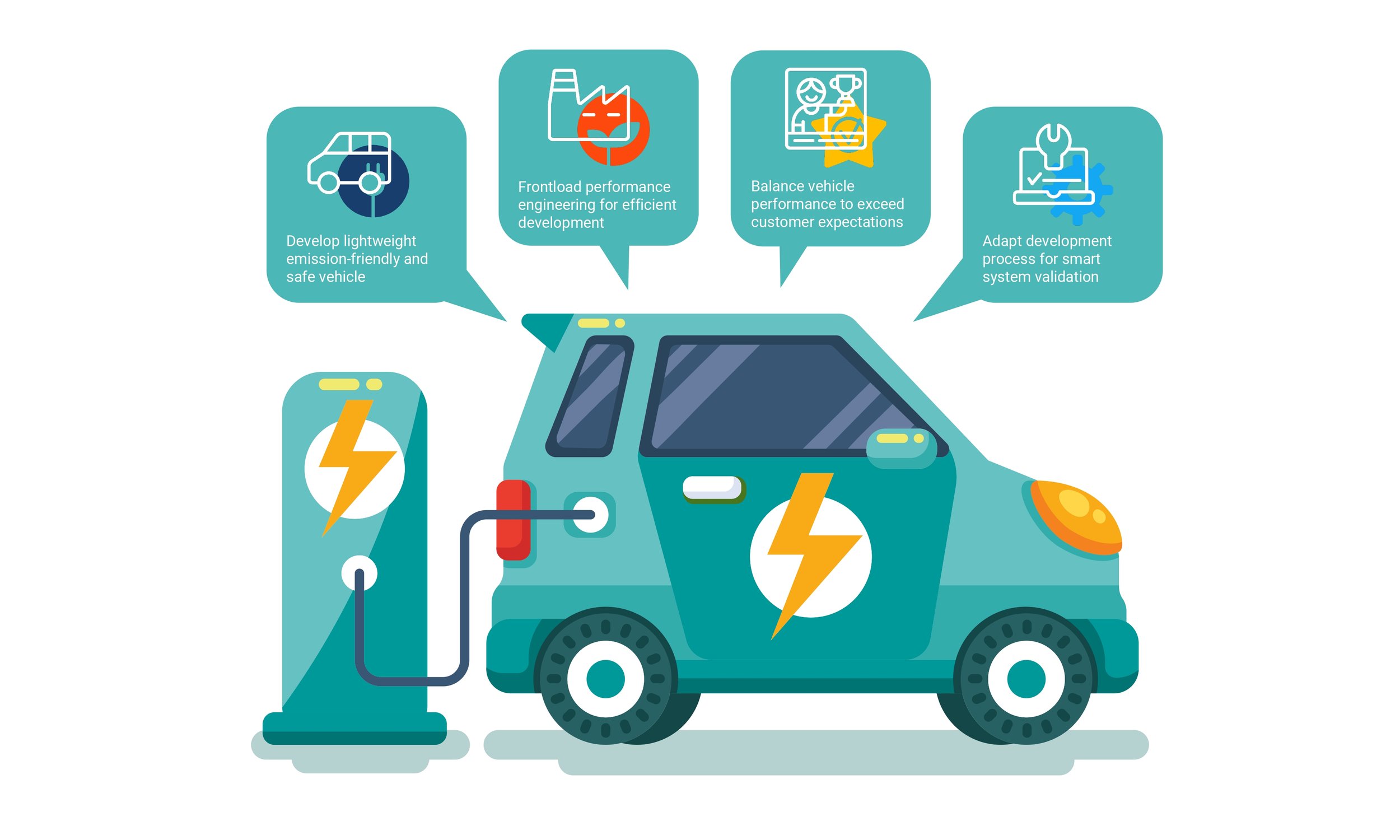What is vehicle performance?
Vehicle performance is the study of the motion of a vehicle. The motion of any vehicle depends upon all the forces and moments that act upon it. These forces and moments, for the most part are caused by interaction of the vehicle with the surrounding medium(s) such as air or water (e.g. fluid static and dynamic forces), gravitational attraction (gravity forces), Earth’s surface (support, ground, or landing gear forces), and on-board energy consuming devices such as rocket, turbojet, piston engine and propellers (propulsion forces). Consequently, in order to fully understand the performance problem, it is necessary to study and, in some way, characterize these interacting forces.
Generally speaking, the performance of a vehicle can be evaluated using following indicators: the maximal speed that can be reached, the accelerating time from zero to a certain speed, the maximal climbing angle, the mileage in a certain condition and the hydrogen consumption in a specific cycle.
The attributes of vehicle performance engineering
Some of the domains to be tested and analysed as part of the vehicle performance attributes include:
Fuel economy & emissions
Thermal and energy management
NVH and acoustics, pass-by-noise regulation
Durability
Drivability
Driving dynamics
Integrated safety
Aerodynamic performance
Water management
All these attributes must intersect with the evolution of manufacturing by aligning with Industry 4.0. To achieve this, you must focus on frontloading design decisions using digitalization for faster turnaround time.
Let’s start out by looking at some key trends in ground transportation which make product innovation critical to remain competitive.
First, the recent Paris agreement was signed by over 190 countries committing to reversing GHG emissions. About quarter of the emissions come from the transport industry, and without changes in transportation, this reverse trend will not occur. Stricter regulations are planned well into the future, making it challenge for new competitive vehicle designs.
Conventional combustion engines alone will not be able to achieve the future emission levels. By optimizing performance of the current combustion engines, we may be able to achieve target goals for the next generation vehicles. But to go beyond those limits, new innovate ideas need to be implemented to achieve future regulations.
One key, disruptive technology that will help meet those goals is vehicle electrification. In the near future, this will be growth in Hybrid electric vehicles, but by 2025 there will be regions shifting to purely electric vehicles. This new technology brings new complexity into the design process, further challenging engineers.
Simultaneously as we need to incorporate new, innovative ideas, engineers need to bring these concepts to the market quickly, while still reducing the cost to be competitive.
It is a challenging market today in the automotive industry.
Performance engineering departments in the automotive industry are confronted with many different challenges:
There is the program pressure on emission friendly, lightweight and safe vehicles – with the strong trend of electrification and autonomous development
Frontloading performance engineering remains essential to support more efficient development for the many vehicle & architecture variants coming to market
At the same time, all of the different performances need to be balanced in order to meet requirements for customer brand experience
On top – the growing amount of ECU, controls, systems and sensors (AV/EV context) challenge the industry for more system driven development
Technologies like simulation, 3D printing and digital twin are recognizable innovations in manufacturing. Moreover, the automotive industry is no exception to implementing these technologies into their vehicle performance engineering.
Simcenter 3D - The most comprehensive, fully-integrated 3D CAE solution
Advantages of using Simcenter 3D
Leveraging expertise in design, simulation and data management
Achieve Excellence in cross-domain engineering
Deliver Insights Earlier
First stage of this end-to-end solution is Simulation Driven Design: The idea behind this is that Simulation must drive design. At this very early stage of the CAE process, components of complex assemblies must already be optimal. These optimal configurations can be obtained with simulation, even if CAD experts are not CAE experts.
Second stage is Model Build Automation: Select components defined in Design, generate application-specific mesh, build models, build connections, in an automated way.
Last stage is Multi-Discipline Simulation. CAE analysts must be able to evaluate, optimize and update designs when needed.
As different engineers, departments, or sometimes companies, are typically involved in these 3 steps, Simulation Process and Data Management is the way to increase the efficiency of communication between design engineers, CAE generalists, CAE experts, such that everyone remains up to date with components designs, CAE process, results, material data, configurations, tests results, requirements and so on… For example, if a CAE specialist detects a design issue, the proposed update and feedback can be efficiently sent back to the complete organization.
Going beyond 3D CAE
This solution is proposed in one integrated simulation platform, which makes a clear difference in process efficiency.
Some of the factors that influence the design for vehicle performance:
the use of the automobile: some cars are required only for local driving; these cars may be capable of achieving good fuel economy on short trips, but they may be less comfortable to drive at high speeds. A sports car, built for speed, will have enhanced steering and handling abilities, but requires a stronger engine, more fuel, and a more sophisticated suspension system. Yet, an automobile must also be flexible enough to perform in every situation and use.
the requirements for pollution-control components
safety features: affecting everything from the braking and steering systems to the materials used to construct the body. The design of the body must incorporate standards of safety, size and weight, aerodynamics or ways to reduce the friction of airflow, and appearance.
Successfully handling today’s vehicle design challenges, such as balancing fuel economy and energy efficiency with performance, requires innovative designs that are explored digitally and confirmed physically.
Emissions reduction, new mobility as well as market globalization have changed the way manufacturers design, engineer and produce vehicles. The race to develop driverless cars is on, and automakers must also focus on developing low-emission vehicles that deliver competitive performance to ensure their brand image in the global marketplace. Vehicle performance engineering departments have to support the vehicle program and vehicle platform managers with simulation and test-based verification and validation in various stages of the vehicle development, from early program to prototype and pre-production sign-off for vehicle driving experience performances.
Siemens Digital Industries Software supports these engineering departments with a model-based development approach fully capable of handling a mechatronic system’s complexity. Our multi-attribute solutions allow engineers to explore digitally and confirm physically a vehicle that balances all of these performance considerations.
By offering a wide range of simulation and testing solutions, as well as engineering services, ETS Solutions together with Siemens Digital Industries Software helps you solve difficult design decisions. The combined leverage of test and simulation to support performance engineering and mechatronic system validation brings on the concept of the digital twin - best of class modeling, best of class testing or combination there-off - which is a key enabler to delivering solutions to frontload performance engineering and design right the first time.
Solution Capabilities
ADAS & Integrated Safety
With the increasing availability and complexity of active safety systems, the mutual interaction between these systems and their interaction with the passive safety systems poses a significant challenge to find the right balance between these to maximize real world safety performance.
Siemens offers solutions to optimize safety and performance linked to ADAS by validating resulting behavior when integrating active and passive safety systems.
Aerodynamics
Strict fuel economy and emissions regulations are placing increased importance on efficient aerodynamic design. Getting the design right as early in the process as possible will not only affect overall packaging, but the brand image too. To bring more efficiency into the development process of external aerodynamic parts, the use of CFD as a tool in the evaluation and understanding of aerodynamic performance becomes more and more important.
Siemens offers best-in-class 3D CFD capability to help you understand the aerodynamic impact of design changes as you pursue increasingly tough performance targets.
Autonomous Driving
The multi-disciplinary challenge to develop and validate automated driving functions is increasing and shows no signs of slowing down. This requires far more efficient design, verification and validation of advanced driver-assistance systems (ADAS) and autonomous driving systems at the full vehicle level.
Siemens integrated and comprehensive solutions support the creation and implementation of mature product development processes that will enable the industry to move autonomous vehicles from concept to reality.
Controls Development, Verification & Validation
Automotive OEMs and suppliers are being asked to frontload their design processes, and to combine controls and mechanical engineering continuously along the development cycle. Closed-loop design improves vehicle architecture and allows for earlier detection of integration problems, before initial prototype testing.
Siemens solutions enable you to develop successful mechatronics systems that optimize mechanics, electronics and software simultaneously as an integrated system.
Driving Dynamics
Driving dynamics is one of the main characteristics to define the perceived quality of a car. It is all about comfort, performance, safety, and driving pleasure. This is largely driven by factors such as stability, agility, and drivability. Impacted by the increased use of lightweight body structures and electric, active systems, manufacturers pursue solutions to design for an optimal vehicle handling performance.
Siemens helps manufacturers to achieve outstanding vehicle handling performance by integrating test and simulation in the entire engineering process. Our tools and services enable car makers to ensure their vehicle has precisely the desired driving characteristics.
NVH & Acoustics
The NVH and acoustic performance of a vehicle strongly impacts the driving experience and hence the perception of quality. Impacted by regulations and low-emission and zero-emission strategies, car manufacturers and suppliers seek solutions to design for optimal NVH comfort to adhere to their brand identity.
The integrated NVH and Acoustic solutions of Siemens Digital Industries Software are designed for combining simulation and test. They enable you to analyze the root cause of noise and vibration problems, optimize vehicles to improve brand image, and increase the perception of quality. Our tools and services help you design correctly from the start and prevent costly redesign later in the vehicle development cycle.
Strength & Durability
Deliver lighter, stronger and more durable designs, while accounting for geographical differences and reduced vehicle weight.
Our durability engineering solutions assist you in acquiring and analyzing road load data to set realistic durability targets and virtually validate strength and durability performance. Our solutions offer an end-to-end durability engineering approach to accelerate your time to market, meticulously balancing weight, strength, and durability to avoid vehicle recalls and meet customer expectations.
Vehicle Energy Management
While eco-friendly vehicle concepts are strategic for OEMs and suppliers, drivers are still expecting driving pleasure to be present. Measures taken to optimize energy efficiency should have no effect on key performances like noise, drivability or ride comfort. Being able to assess early in the design and engineering process the impact of system architecture choices on the global energy balance and on key attributes performance enables to frontload design decisions and maintain time-to-market.
Siemens Digital Industries Software offers a unique combination of system, 3D and CFD simulation tools, along with engineering services, allowing you to find the right balance before a physical prototype exists. You can then digitally explore the physics and the control systems behind various vehicle subsystems to ensure full-vehicle energy balance and optimization.
Water & Dirt Management
Ensuring a vehicle’s performance under harsh weather conditions is crucial for customer satisfaction and driver safety. With the increase of sensors coming with ADAS requires sensors to have peak performance, even with these harsh conditions. This requires keeping sensors clear doing rain, snow, or dirt, whilst maintaining vehicle styling and budget for production. In addition to the sensors, windows/mirrors needs to keep clear for driver vision to the changing road conditions. Vehicle aerodynamic designers need to balance these objectives, between styling, acoustics, and water/dirt management while applying new innovative technologies.
Siemens solutions enable you to develop a vehicle that performs in any weather condition to the standards you and your customers expect.
The automotive industry has been on a digital transformation journey during the last few decades.
Recent advances in computing power, speed, internet connectivity and disruptive technology have accelerated the transformation to a new level.
During Covid-19 pandemic, we experienced that the companies which had adapted digital transformation were able to manage their business operations effectively.
For others it was a key learning to accelerate their digital transformation, otherwise they run the risk of being left far behind their competition!
Digitalization has become a necessity.
Simcenter helps you to use complexity as a competitive advantage. Our solutions allow you to model the complexity all the way from material behavior to performance of entire systems. This includes coverage for a broad range of physics including structures, flow, electromagnetics, motion, thermal and much more.
Simcenter includes solutions available for intelligent design space exploration both standalone and integrated into various simulation software. Additionally, Simcenter includes innovative new solutions or generative engineering spanning structural and fluid topologies, and also system architectures.
Within Simcenter we are investing resources in developing methods for reduced order modeling (ROM), workflow automation solutions, and AI-driven usability enhancements as just some examples of how we enable individuals, teams, and entire organizations to go faster.
Finally, we invest significantly in integrations within Simcenter and with other solutions within Xcelerator. We recognize that Simcenter exists within an ecosystem that includes many other software applications. Hence our solutions are designed to be open and support industry standards.
Simcenter is a flexible, open, and scalable portfolio of the best predictive simulation and test applications that support you at every step in your digital journey. Simcenter is a key component within Xcelerator.
Becoming a Simcenter customer means more than purchasing world-class software or services; it opens the door to an unrivaled wealth of engineering expertise. Our technological solutions are backed by a global team of engineering specialists, dedicated to helping you meet the challenges of your industry and exceed the expectations of your market.
We believe that the comprehensive digital twin is critical to the future of engineering innovation and that simulation and test are the beating heart of the digital twin. By providing you with insight into the real-world performance of your product or process, Simcenter allows you to accelerate innovation over the entire lifecycle.
Use of Simcenter delivers a number of benefits to customers including the ability to design and engineer better products, gain earlier insights on performance, accelerate innovation which helps them gain market share, and achieve greater productivity be it at the individual, team or organizational levels.
We ensure our customers derive the greatest benefits from their investment in Simcenter. This is achieved in many ways such as our open philosophy that enables Simcenter to work within a broader ecosystem, a unique dedicated support model, our expertise and investments in engineering services, and our ability to partner with our customers on technology development. As a key part of the Xcelerator portfolio, Simcenter delivers even greater value for our customers’ business by integrating simulation and test into the broader context for development.
Simcenter - Where engineering meets tomorrow
How can we help you?
Interested in our engineering and consultancy services? Send us your inquiry via the Engineering and Consultancy Services Form and we will be pleased to help you.


















